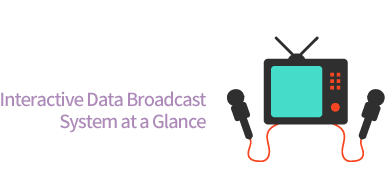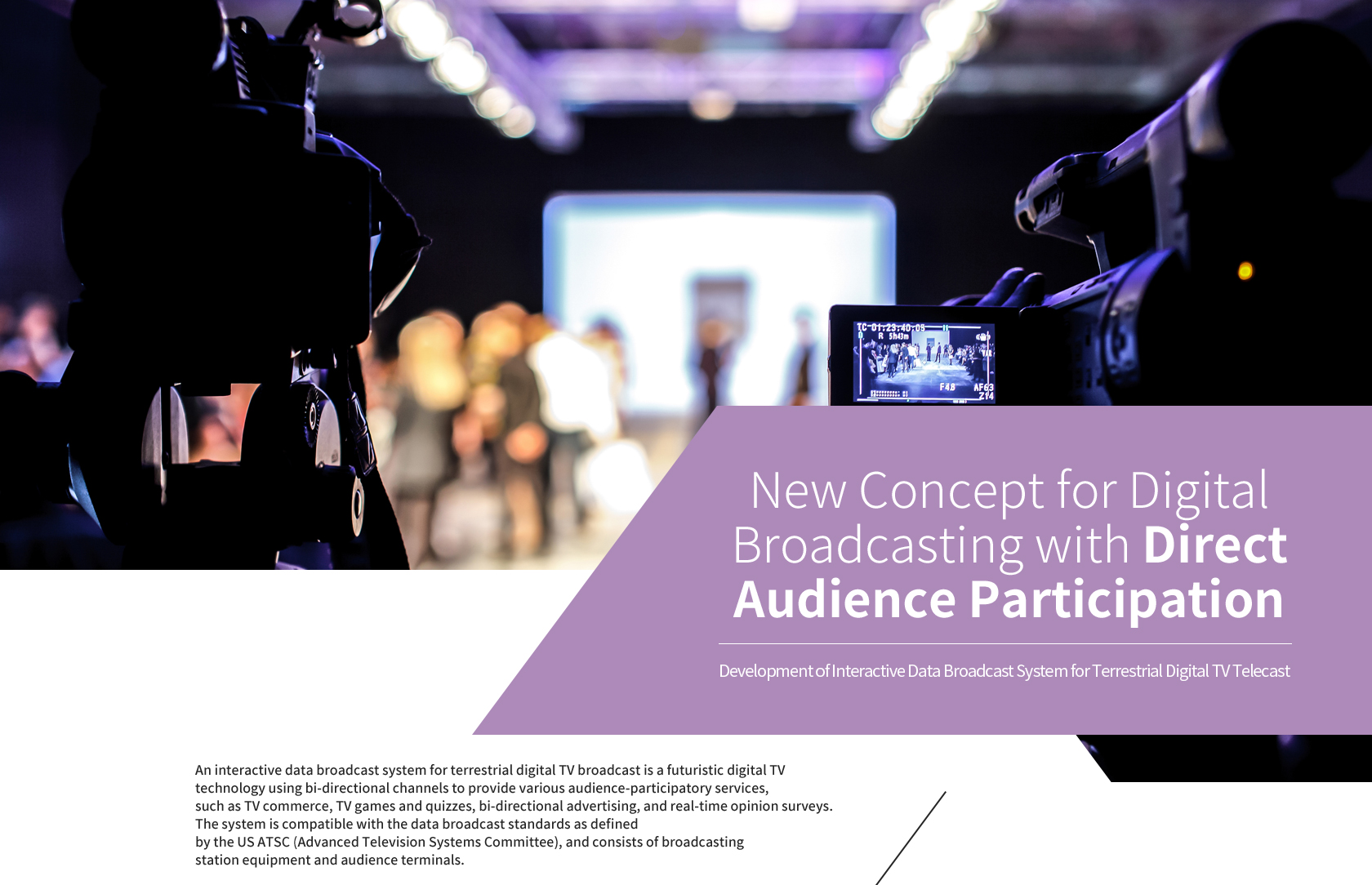
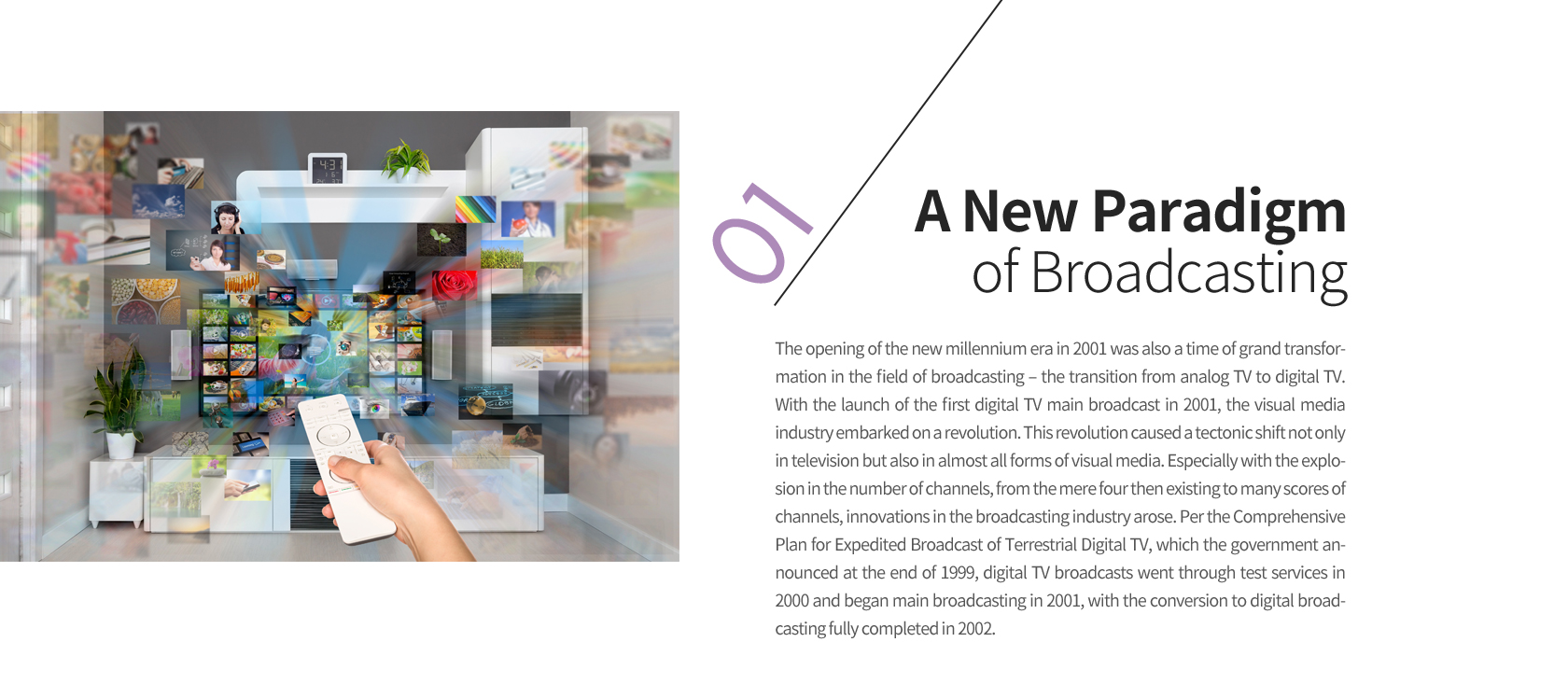
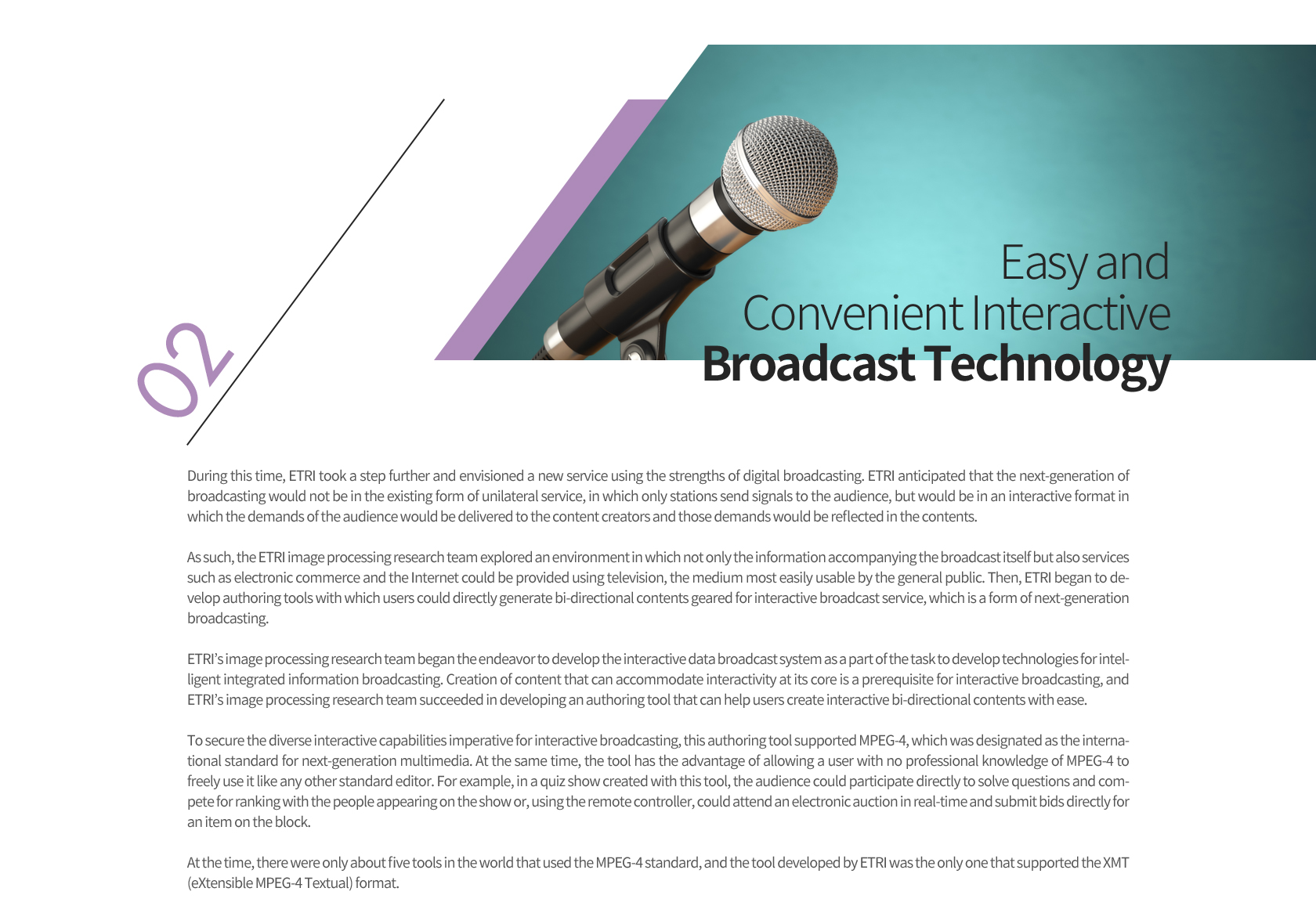
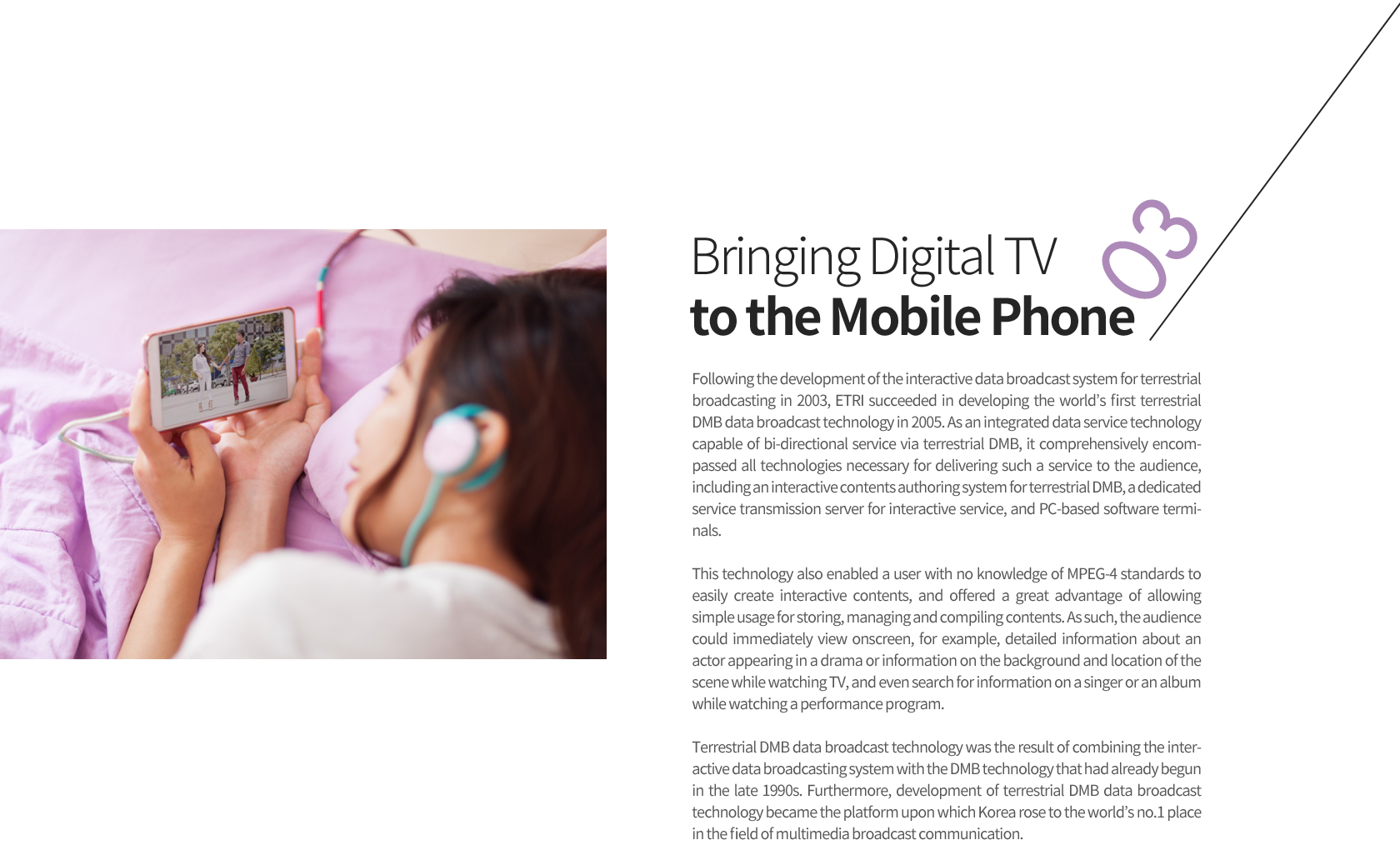
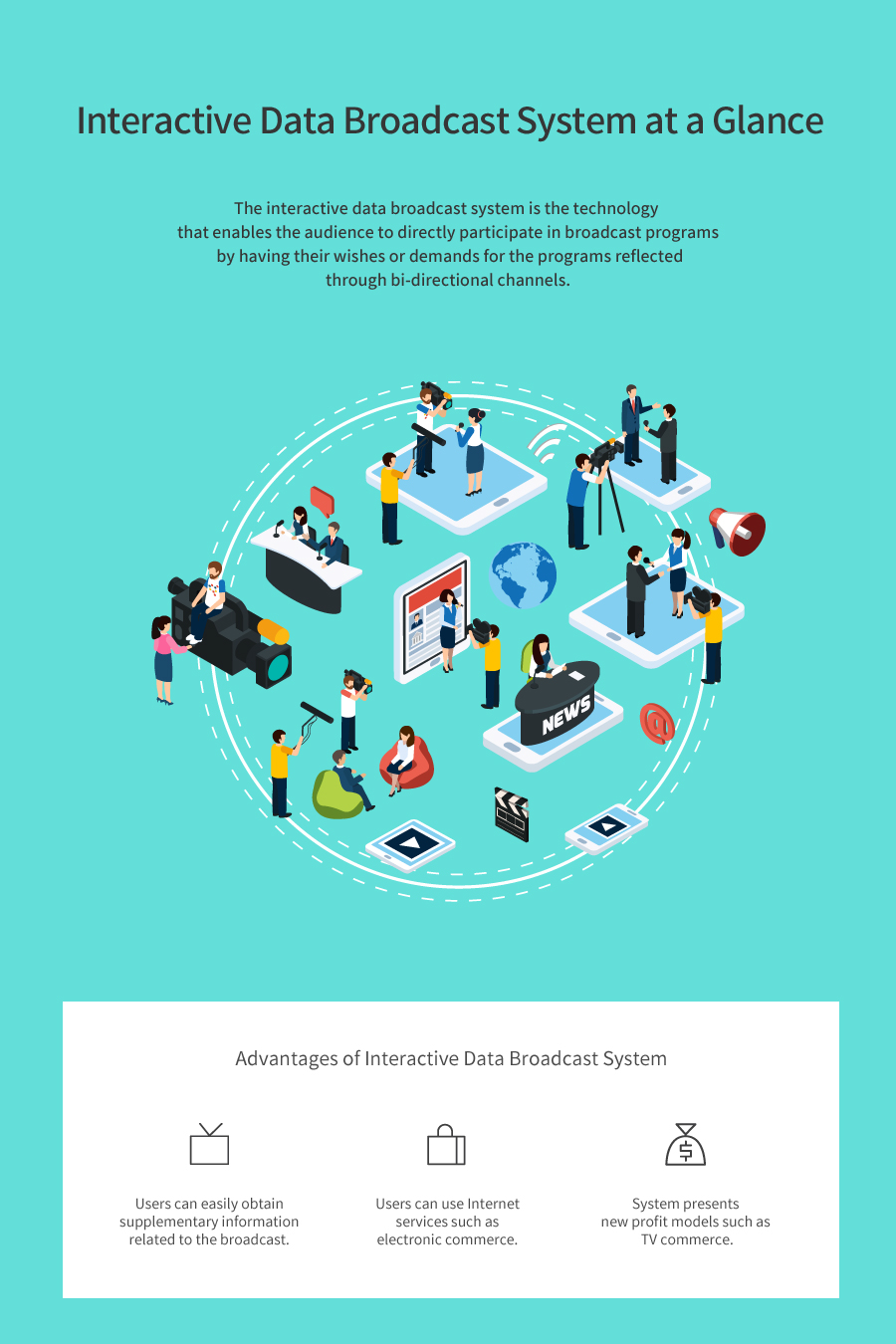

New Concept for Digital
Broadcasting with Direct
Audience Participation
Development of Interactive Data Broadcast System for Terrestrial Digital TV Telecast
An interactive data broadcast system for terrestrial digital TV broadcast is a futuristic digital TV technology using bi-directional channels to provide various audience-participatory services, such as TV commerce, TV games and quizzes, bi-directional advertising, and real-time opinion surveys. The system is compatible with the data broadcast standards as defined by the US ATSC (Advanced Television Systems Committee), and consists of broadcasting station equipment and audience terminals.

01
A New Paradigm
of Broadcasting
The opening of the new millennium era in 2001 was also a time of grand transformation in the field of broadcasting – the transition from analog TV to digital TV. With the launch of the first digital TV main broadcast in 2001, the visual media industry embarked on a revolution. This revolution caused a tectonic shift not only in television but also in almost all forms of visual media. Especially with the explosion in the number of channels, from the mere four then existing to many scores of channels, innovations in the broadcasting industry arose. Per the Comprehensive Plan for Expedited Broadcast of Terrestrial Digital TV, which the government announced at the end of 1999, digital TV broadcasts went through test services in 2000 and began main broadcasting in 2001, with the conversion to digital broadcasting fully completed in 2002.

02
Easy and
Convenient Interactive
Broadcast Technology
During this time, ETRI took a step further and envisioned a new service using the strengths of digital broadcasting. ETRI anticipated that the next-generation of broadcasting would not be in the existing form of unilateral service, in which only stations send signals to the audience, but would be in an interactive format in which the demands of the audience would be delivered to the content creators and those demands would be reflected in the contents.
As such, the ETRI image processing research team explored an environment in which not only the information accompanying the broadcast itself but also services such as electronic commerce and the Internet could be provided using television, the medium most easily usable by the general public. Then, ETRI began to develop authoring tools with which users could directly generate bi-directional contents geared for interactive broadcast service, which is a form of next-generation broadcasting.
ETRI’s image processing research team began the endeavor to develop the interactive data broadcast system as a part of the task to develop technologies for intelligent integrated information broadcasting. Creation of content that can accommodate interactivity at its core is a prerequisite for interactive broadcasting, and ETRI’s image processing research team succeeded in developing an authoring tool that can help users create interactive bi-directional contents with ease.
To secure the diverse interactive capabilities imperative for interactive broadcasting, this authoring tool supported MPEG-4, which was designated as the international standard for next-generation multimedia. At the same time, the tool has the advantage of allowing a user with no professional knowledge of MPEG-4 to freely use it like any other standard editor. For example, in a quiz show created with this tool, the audience could participate directly to solve questions and compete for ranking with the people appearing on the show or, using the remote controller, could attend an electronic auction in real-time and submit bids directly for an item on the block.
At the time, there were only about five tools in the world that used the MPEG-4 standard, and the tool developed by ETRI was the only one that supported the XMT (eXtensible MPEG-4 Textual) format.

03
Bringing Digital TV
to the Mobile Phone
Following the development of the interactive data broadcast system for terrestrial broadcasting in 2003, ETRI succeeded in developing the world’s first terrestrial DMB data broadcast technology in 2005. As an integrated data service technology capable of bi-directional service via terrestrial DMB, it comprehensively encompassed all technologies necessary for delivering such a service to the audience, including an interactive contents authoring system for terrestrial DMB, a dedicated service transmission server for interactive service, and PC-based software terminals.
This technology also enabled a user with no knowledge of MPEG-4 standards to easily create interactive contents, and offered a great advantage of allowing simple usage for storing, managing and compiling contents. As such, the audience could immediately view onscreen, for example, detailed information about an actor appearing in a drama or information on the background and location of the scene while watching TV, and even search for information on a singer or an album while watching a performance program.
Terrestrial DMB data broadcast technology was the result of combining the interactive data broadcasting system with the DMB technology that had already begun in the late 1990s. Furthermore, development of terrestrial DMB data broadcast technology became the platform upon which Korea rose to the world’s no.1 place in the field of multimedia broadcast communication.







